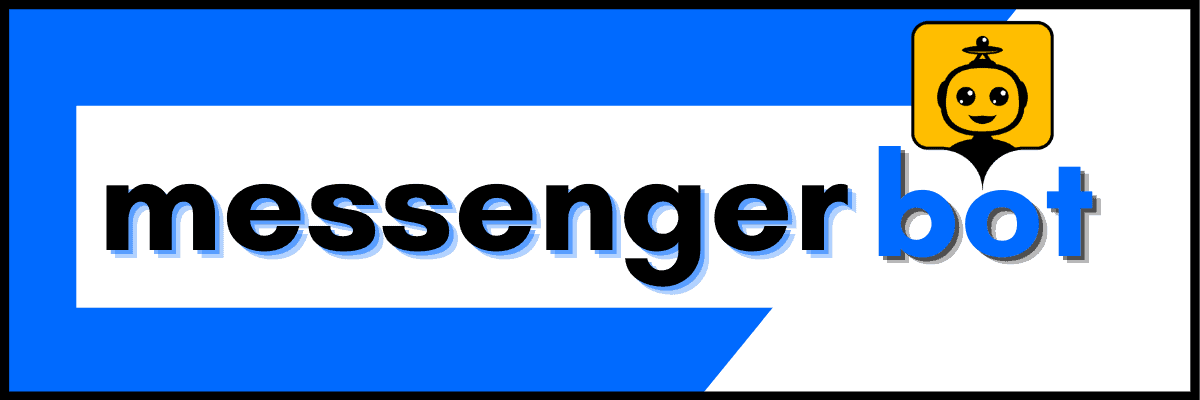In today’s rapidly evolving digital landscape, selling chatbots has emerged as a lucrative opportunity for entrepreneurs and businesses alike. As artificial intelligence continues to reshape customer interactions, understanding how to effectively market and sell these innovative tools is essential. This article, titled How to Start Selling Chatbots: Unlocking Profitable Opportunities in AI Sales, will guide you through the intricacies of the chatbot market, exploring key questions such as can you make money selling chatbots? and how much can you sell AI chatbots for?. We will delve into the profitability of chatbots, uncovering the most profitable chatbots currently available and the features that drive their sales. Additionally, we’ll provide actionable insights on how to start a chatbot business, including effective marketing strategies and innovative ways to monetize your offerings. Whether you’re a seasoned entrepreneur or just starting out, this comprehensive guide will equip you with the knowledge needed to thrive in the world of chatbot sales.
Can you make money selling chatbots?
Yes, you can make money selling chatbots through various methods. The chatbot market is rapidly expanding, and there are numerous strategies to capitalize on this trend. Here are some effective strategies to consider:
Understanding the chatbot market landscape
- Chatbot Reselling: Partner with chatbot development companies to resell their products. You can purchase chatbots at a wholesale price and sell them to businesses at a markup. This model allows you to leverage existing technology without the need for extensive development skills.
- Commission-Based Sales: Offer chatbots for free or at a reduced price to businesses, and negotiate a commission on any sales or leads generated through the chatbot. This approach can attract more clients who are hesitant to invest upfront.
- Custom Chatbot Development: If you have programming skills, consider developing custom chatbots tailored to specific business needs. Businesses often seek unique solutions that can enhance customer engagement and streamline operations.
- Subscription Services: Create a subscription model where businesses pay a monthly fee for access to your chatbot services, including updates and support. This can provide a steady income stream.
- Consulting Services: Offer consulting services to help businesses integrate chatbots into their existing systems. This can include training staff, optimizing chatbot performance, and analyzing data to improve customer interactions.
- Affiliate Marketing: Join affiliate programs for chatbot platforms and earn commissions by promoting their services. This can be an effective way to monetize your audience if you have a blog or social media presence focused on technology or business solutions.
- Educational Content Creation: Create and sell courses or eBooks on how to implement and benefit from chatbots. With the growing interest in automation, educational resources can be a lucrative market.
According to a report by Grand View Research, the global chatbot market is expected to reach $1.34 billion by 2024, growing at a CAGR of 24.3%. This growth indicates a significant opportunity for entrepreneurs and businesses looking to capitalize on chatbot technology.
In conclusion, there are multiple avenues to monetize chatbots, from reselling and custom development to consulting and educational content. By leveraging these strategies, you can tap into the expanding market and create a profitable business model.
Key factors influencing profitability in chatbot sales
Several key factors influence the profitability of selling chatbots:
- Market Demand: The increasing demand for automation in customer service and engagement drives the need for chatbots. Businesses are looking for efficient solutions to enhance customer interactions, making chatbots a valuable asset.
- Quality of the Chatbot: The effectiveness of the chatbot in handling inquiries and providing accurate responses directly impacts customer satisfaction and retention. High-quality chatbots are more likely to lead to repeat sales and referrals.
- Integration Capabilities: Chatbots that can seamlessly integrate with existing business systems and platforms tend to be more attractive to potential buyers. This capability enhances their usability and effectiveness.
- Support and Maintenance: Offering ongoing support and maintenance services can significantly boost profitability. Businesses appreciate reliable support, which can lead to long-term contracts and recurring revenue.
- Marketing Strategy: A well-defined marketing strategy that highlights the benefits and unique features of your chatbots can attract more clients. Utilizing social media, content marketing, and SEO can enhance visibility and drive sales.
By focusing on these factors, you can enhance your chatbot sales strategy and increase profitability in this growing market.
Can You Resell a Chatbot?
Yes, you can resell a chatbot through various reseller programs offered by companies specializing in chatbot technology. This presents a significant opportunity for entrepreneurs looking to enter the growing market of selling chatbots. Here are key points to consider:
Exploring the Resale Potential of Chatbots
Many chatbot providers, such as Brain Pod AI, offer white-label solutions that allow you to brand the chatbot with your own logos, colors, and domain. This enables you to present the chatbot as your own product while leveraging the underlying technology. Reseller programs often provide customization options to tailor the chatbot’s functionalities to meet specific client needs. This includes integrating with existing systems, adding unique features, and ensuring the chatbot aligns with the business’s goals.
Reselling chatbots can be a lucrative business model. You can choose from various pricing strategies, such as subscription-based models, one-time fees, or usage-based billing, depending on your target market and the services you provide. The demand for chatbots is growing across various industries, including e-commerce, customer service, and healthcare. By reselling chatbots, you can tap into this expanding market and provide valuable solutions to businesses looking to enhance customer engagement and streamline operations.
Legal Considerations When Reselling Chatbots
When engaging in chatbot sales, it is crucial to understand the legal implications involved. Ensure that you have the right to resell the chatbot by reviewing the terms and conditions of the provider. Most reputable chatbot platforms offer extensive support and training for resellers, including onboarding assistance, technical support, and marketing resources to help you successfully sell and manage the chatbot solutions.
Additionally, familiarize yourself with any licensing agreements and intellectual property rights associated with the chatbot technology. This will help you avoid potential legal issues and ensure a smooth resale process. For more information on chatbot reseller programs, you can refer to resources such as Chatbots Magazine and Gartner.
How much can you sell AI chatbots for?
When it comes to selling chatbots, understanding the pricing strategies is crucial for maximizing profitability. The price range for chatbots for sale can vary significantly based on several factors, including functionality, complexity, and the target market. Here’s a comprehensive breakdown:
Pricing strategies for chatbots for sale
1. Basic Chatbots: For simple, rule-based chatbots, prices typically range from $1,000 to $3,000. These bots handle straightforward tasks such as FAQs and basic customer service inquiries.
2. Advanced AI Chatbots: More sophisticated chatbots that utilize natural language processing (NLP) and machine learning can cost between $5,000 and $15,000. These bots can understand context, learn from interactions, and provide personalized responses.
3. Custom Solutions: For businesses requiring highly customized chatbots tailored to specific needs, prices can exceed $20,000. This includes extensive development, integration with existing systems, and ongoing support.
4. Ongoing Costs: It’s important to factor in additional costs such as support contracts, maintenance, and website modifications to incorporate the chatbot effectively. These can range from 10% to 20% of the initial development cost annually.
5. Market Trends: According to a report by Gartner, the demand for AI chatbots is expected to grow, with businesses increasingly investing in these technologies to enhance customer engagement and operational efficiency.
6. Negotiation: Pricing can often be negotiated based on the specific requirements of the business and the expected return on investment (ROI) from implementing the chatbot.
Factors affecting the price of chatbots
Several key factors influence the pricing of chatbots for sales:
- Functionality: The more features and capabilities a chatbot has, the higher the price. Advanced functionalities such as multilingual support and integration with e-commerce platforms can significantly increase costs.
- Complexity: Chatbots that require complex algorithms and extensive training data will naturally command higher prices. For instance, a bot for sales that can handle intricate customer queries will be priced accordingly.
- Target Market: The industry and audience you are targeting can also affect pricing. For example, chatbots designed for enterprise-level solutions may be priced higher than those aimed at small businesses.
- Development Time: The time required to develop and deploy a chatbot can impact its price. Custom solutions that require more development time will typically be more expensive.
By understanding these factors, businesses can better assess the value of AI chatbots and make informed purchasing decisions. For more insights on enhancing customer engagement through chatbots, check out our article on elevating customer support with conversational AI chatbots.
How Profitable Are Chatbots?
Chatbots have emerged as a lucrative investment for businesses, transforming the way companies interact with customers and manage operations. The profitability of chatbots can be analyzed through their return on investment (ROI) and the success stories of businesses that have effectively integrated these tools into their strategies.
Analyzing the ROI of Chatbot Investments
Investing in chatbots can yield significant returns for businesses. The global chatbot market is projected to reach approximately $3.619 billion by 2030, growing at a compound annual growth rate (CAGR) of 23.9% (Straits Research, 2021). This growth reflects the increasing recognition of chatbots as essential assets for enhancing customer engagement and driving revenue growth. Here are some key factors that contribute to the profitability of chatbots:
- Cost Reduction: Implementing chatbots can significantly lower operational costs. According to a report by IBM, businesses can save up to 30% on customer service costs by utilizing chatbots to handle routine inquiries and tasks.
- Increased Sales: Chatbots can enhance sales by providing personalized shopping experiences. A study by Juniper Research indicates that chatbots will facilitate over $112 billion in retail sales by 2023, showcasing their potential to drive conversions.
- 24/7 Availability: Unlike human agents, chatbots can operate around the clock, ensuring that customer queries are addressed promptly, which can lead to higher customer satisfaction and retention rates.
- Data Collection and Insights: Chatbots can gather valuable customer data, enabling businesses to analyze consumer behavior and preferences. This data can inform marketing strategies and product development, ultimately leading to increased profitability.
- Scalability: As businesses grow, chatbots can easily scale to handle increased customer interactions without the need for proportional increases in staffing, making them a cost-effective solution for expanding enterprises.
In conclusion, the profitability of chatbots lies in their ability to reduce costs, increase sales, provide continuous support, gather insights, and scale operations efficiently. As the technology continues to evolve, businesses that leverage chatbots effectively will likely see substantial financial benefits.
Case Studies of Successful Chatbot Sales
Numerous businesses have successfully integrated chatbots into their operations, leading to remarkable improvements in customer engagement and sales. For instance, companies like Brain Pod AI have developed innovative chatbot solutions that enhance customer interactions and streamline processes. These success stories highlight the potential of chatbots as powerful tools for driving business growth.
One notable example is a retail company that implemented a chatbot for sales, resulting in a 25% increase in conversion rates within the first three months. By providing personalized recommendations and assisting customers throughout their shopping journey, the chatbot significantly improved the overall shopping experience.
Another case involves a service-based business that utilized chatbots to handle customer inquiries. This led to a 40% reduction in response times and a notable increase in customer satisfaction ratings. Such examples illustrate how effectively deployed chatbots can transform customer service and sales strategies.
As businesses continue to explore the potential of chatbots, the evidence suggests that those who invest in these technologies will reap the rewards of enhanced profitability and customer loyalty.
What are the most profitable chatbots?
When exploring the landscape of selling chatbots, it’s essential to identify which chatbots are currently leading the market in profitability. The most successful chatbots not only enhance customer engagement but also drive sales and improve operational efficiency. Here are some of the best-selling chatbots in the market today:
Best selling chatbots in the market today
- Drift: Drift is a leading sales chatbot that focuses on real-time communication, allowing businesses to engage with potential customers instantly. Its AI-driven capabilities help qualify leads and schedule meetings, significantly boosting conversion rates. According to a study by Drift, companies using their chatbot saw a 400% increase in qualified leads.
- Intercom: Intercom offers a versatile chatbot solution that combines live chat with automated responses. It is particularly effective for customer support and lead generation. Research from Intercom indicates that businesses using their chatbot experience a 50% reduction in response times, enhancing customer satisfaction.
- HubSpot Chatbot: HubSpot’s chatbot is integrated with its CRM, making it an excellent choice for businesses looking to streamline their sales processes. It can automate tasks such as booking meetings and answering FAQs. A report by HubSpot found that companies using their chatbot feature increased their lead generation by 30%.
- ManyChat: ManyChat specializes in Facebook Messenger chatbots, allowing businesses to engage customers on social media. Its user-friendly interface and automation features help businesses nurture leads effectively. According to ManyChat, brands using their platform have seen a 300% increase in engagement rates.
- Tidio: Tidio combines live chat and chatbot functionalities, making it suitable for e-commerce businesses. It offers customizable templates and integrates with various platforms. A case study by Tidio revealed that online stores using their chatbot experienced a 20% increase in sales conversions.
- Zendesk Chat: Zendesk Chat provides a robust solution for customer service, allowing businesses to automate responses while maintaining a human touch. Its analytics tools help track performance and customer satisfaction. Zendesk reports that companies using their chat solutions see a 30% improvement in customer retention.
- Chatfuel: Chatfuel is designed for building chatbots without coding, primarily for Facebook Messenger. It offers powerful automation tools for marketing and customer support. According to Chatfuel, businesses that implement their chatbots can reduce customer service costs by up to 80%.
Features that drive sales in chatbots for sales
The profitability of chatbots is often driven by specific features that enhance their functionality and appeal to businesses. Here are some key features that contribute to successful chatbot sales:
- Automated Responses: Chatbots that provide instant, automated responses to customer inquiries can significantly improve user experience and engagement. This feature is crucial for businesses aiming to enhance customer satisfaction and retention.
- Lead Generation Tools: Many chatbots incorporate advanced lead generation techniques, allowing businesses to capture and nurture leads effectively. This capability is essential for driving sales and increasing conversion rates.
- Integration Capabilities: The ability to integrate seamlessly with existing CRM systems and other business tools is vital. Chatbots that can connect with platforms like HubSpot or Zendesk enhance operational efficiency and data management.
- Analytics and Reporting: Robust analytics tools that track user interactions and performance metrics help businesses optimize their chatbot strategies. Understanding user behavior is key to improving engagement and sales outcomes.
- Multilingual Support: Chatbots that offer multilingual capabilities can cater to a broader audience, making them more appealing to global businesses. This feature is particularly important in today’s diverse market.
By focusing on these features, businesses can enhance their chatbots for sale and drive profitability in their sales efforts. For more insights on how to effectively leverage chatbots, consider exploring our tutorials and pricing options.
How do I start a chatbot business?
Starting a chatbot business involves a series of strategic steps that can lead to successful chatbot sales and a thriving enterprise. By understanding the market and effectively implementing your chatbot solutions, you can tap into the lucrative potential of selling chatbots.
Steps to create and sell chatbots effectively
1. Define Your Business Goals and Target Audience
Clearly outline what you aim to achieve with your chatbot, whether it’s improving customer service, increasing sales, or enhancing user engagement. Conduct market research to understand the specific needs and preferences of your target audience, which will guide your chatbot’s functionality and tone.
2. Select the Right Chatbot Platform
Choose a chatbot builder that aligns with your technical skills and business requirements. Popular options include Brain Pod AI, Dialogflow, Chatfuel, and ManyChat, which offer various features for different channels like websites, Facebook Messenger, and WhatsApp. Consider factors such as ease of use, integration capabilities, and pricing plans.
3. Design an Effective Conversation Flow
Map out the conversation flow using visual tools or flowcharts to ensure a seamless user experience. Implement decision trees and use natural language processing (NLP) to make interactions more intuitive. Research shows that well-structured conversation flows can significantly enhance user satisfaction.
4. Test Your Chatbot Thoroughly
Conduct extensive testing to identify any bugs or areas for improvement. Use A/B testing to compare different conversation flows and responses. Gather feedback from real users during beta testing to refine the chatbot’s performance and usability.
5. Utilize Data and Customer Feedback for Continuous Improvement
Analyze interaction data to understand user behavior and preferences. Tools like Google Analytics can provide insights into engagement metrics. Regularly update your chatbot based on user feedback and emerging trends in AI technology to ensure it remains relevant and effective.
6. Market Your Chatbot Business
Develop a marketing strategy that highlights the unique benefits of your chatbot. Utilize social media, content marketing, and SEO techniques to reach your target audience effectively. Consider partnerships with businesses that can benefit from your chatbot solutions, expanding your reach and credibility in the market.
Marketing strategies for selling chatbots
To effectively market your chatbots for sales, consider the following strategies:
- Content Marketing: Create informative content that showcases the benefits of your chatbots. Blog posts, case studies, and tutorials can attract potential customers and establish your authority in the chatbot space. For example, check out our Messenger Bot tutorials for insights on chatbot implementation.
- Social Media Engagement: Utilize platforms like Facebook, Instagram, and LinkedIn to promote your chatbots. Share success stories and engage with your audience to build a community around your brand.
- SEO Optimization: Optimize your website and content for search engines to improve visibility. Use keywords related to selling chatbots, such as “chatbot for sale” and “sell chatbots,” to attract organic traffic.
- Partnerships and Collaborations: Collaborate with businesses that can benefit from your chatbot solutions. This can enhance your credibility and expand your reach in the market.
By implementing these strategies, you can effectively position your chatbot business for success and capitalize on the growing demand for chatbots in various industries.
How to make money with chatbots
Making money with chatbots involves leveraging their capabilities to enhance business operations and customer interactions. By understanding innovative ways to monetize chatbots and utilizing various platforms, you can create a profitable venture in the growing chatbot market.
Innovative ways to monetize chatbots
There are several strategies to monetize chatbots effectively. One of the most popular methods is through lead generation. Chatbots can engage users in real-time, collecting valuable information that can be used to convert leads into customers. For instance, businesses can implement a Facebook AI chatbot to streamline this process, making it easier to capture and nurture leads.
Another approach is to integrate e-commerce functionalities directly into the chatbot. By allowing users to browse products and make purchases through the chatbot interface, businesses can enhance the shopping experience. This method not only increases sales but also improves customer satisfaction. For example, platforms like Messenger Bot offer features that enable direct selling and cart recovery, making it easier for businesses to convert interactions into sales.
Additionally, offering subscription-based services through chatbots can create a steady revenue stream. By providing premium features or exclusive content, businesses can encourage users to subscribe for enhanced experiences. This model is particularly effective for industries such as education and entertainment, where ongoing engagement is crucial.
Leveraging platforms for selling AI chatbots
To maximize profitability, it’s essential to leverage various platforms for selling AI chatbots. Utilizing marketplaces like Brain Pod AI can help reach a broader audience. Brain Pod AI offers a range of AI services, including chatbot solutions that can be customized for different business needs. By partnering with established platforms, you can enhance your visibility and credibility in the market.
Moreover, social media platforms are invaluable for promoting chatbots. By creating engaging content that showcases the chatbot’s capabilities, businesses can attract potential customers. Utilizing targeted advertising on platforms like Facebook and Instagram can also drive traffic to your chatbot services, increasing the likelihood of sales.
In conclusion, making money with chatbots requires a strategic approach that combines innovative monetization methods with effective platform utilization. By focusing on lead generation, e-commerce integration, and subscription services, along with leveraging platforms like Messenger Bot and Brain Pod AI, you can create a successful chatbot business.






